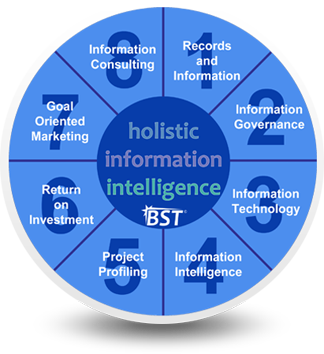
Project Profiling simplifies descriptions of an information project. In addition to defining the purpose and ownership of the information project, it presents a first estimate of the activities involved and the total investment that will be required, as well as operating costs and, in the case of income generating information projects, the annual income. It is simplified in a number of senses; costs may still not be well defined, minor items may be excluded, and assumptions as to the demand for the output of the investment, whether it be a educational institution, non-for-profit organization or childcare facility.
Click to enlarge
What is the Purpose of Profiling?
The Project Profile serves a number of important purposes including:
a) It helps to ensure that the organizations understand the probable implications of their proposal in terms of investment and operating costs, labor requirements, scale of operations and other factors. It is often not until the proposed project is debated and written down in front of everyone that these elements really emerge. Up to this point, organization members may just have felt that it would be 'good' to the old record and information management system, without really understanding what that might entail with the use of an efficiency application for managing information.
b) It helps eliminate wasted effort in preparing detailed projects that are incoherent, lacking support among the organization, or which fail to meet basic tests of viability. If human and financial resources to support project formulation are limited - which is usually the case ‐ this aspect of the profile in acting as a 'filter' is very important. If the organization can only receive funds to support one full project preparation per year, it is best not to waste those resources on a project that has no chance of success.
c) The participation of organization staff members in the preparation and assessment of the profile is an important stage in the ownership process for the specific project, as well as increasing the confidence of the staff members in their ability to identify and develop real solutions to their problems (or responses to opportunities). For organizations which have always relied on outsiders telling them what should be done, such confidence building is a valuable contribution to the social implications of the community.
What is the Difference between a Profile and a Detailed Project Design?
Although a project profile is normally the first step towards the development of a detailed project design, there are important differences between the two. The profile is a simplified view of the eventual project that makes important compromises in order to reduce the complexity of the analysis and render it understandable with no previous experience in project design or analysis. Such compromises are not, in themselves, bad, but they can be dangerous if the person leading forgets that they exist, and encourages the participants to think that the profile is the project. The following are key characteristics of a project profile.
A Profile is a 'Snapshot' of the Project: A proper project analysis considers the changes to the project over time. An organization that performs a majority of its business on paper but volume increases exponentially as the years go by, may increase its efficiency (thus reducing costs), by moving towards an efficiency application in the form of an Electronic Document Management Solution (EDMS). The profile, however, takes the simple approach and looks at the results from an average year over the project life.
A Profile Includes no Financing Costs: A key simplification made in preparing a profile for income generating projects is to completely ignore the cost of financing as the estimation of such costs requires quite complicated calculations (non-income generating projects will not normally have financing costs, as they use grant funds, rather than loans). In the detailed project analysis financing costs are considered - not only for the investment itself, but also for working capital needed to cover initial operating expenses. Financing costs can be significant and their absence at this stage means that the profile will tend to look more attractive than it would do if these costs were included, and this should be kept in mind.
A Profile Uses Broad Estimations for Costs and Income: In preparing a detailed project it is expected that the organizations make every reasonable effort to obtain accurate information as to costs and income (including yields and prices). A Profile Excludes Associated Costs: Projects typically involve a number of associated costs that are largely ignored at the level of the profile. These can include such items as: technical training of staff; establishment of systems (for example an EDMS). Although costs may not be very large for one component, many components can add significantly to start-up costs for the organization. However, they require considerable work to estimate accurately and are normally ignored in preparing the profile.
A Profile Pays Limited Attention to Project Organization and Impact: In order to ensure that an investment results in a successful project, it is critical to consider carefully how the eventual project will be managed and operated, and what sort of impact it might have on the social, cultural and environmental setting it is placed in. Determining these factors may often involve considerable discussions among organization staff members. It is not necessary to provide all the answers at the profile stage. However, it is important that the organizations have given some thought to these factors, otherwise arguments may severely damage the organization's unity and commitment later in the preparation process.
The Principal Elements of a Project Profile
The project profile consists of five parts. The last part has two variations: one exclusively for income generating projects (4a); and the other for non income generating projects (4b). Many organizations prefer to define the investment before tackling general costs or income, but this is not required.
Part 1: Background Information: Contains general information about the organization, the location of the project and its characteristics, as well as a brief summary of the objectives and justification for the investment, including the demand anticipated for the service or product resulting from the project when operating.
Part 2: Investment. Organizations are asked to list the various elements that will have to be obtained (purchased or supplied by the group) for the investment to be realized. For each item, it is also necessary to estimate the average working life of the item and who is to provide it. A simple calculation is then made to determine the average annual cost of each item.
Part 3: Operating Costs and Income per Activity: This describes income and costs directly resulting from carrying out activities made possible by the project, and which change according to the scale of activity (i.e. the greater the activity, the greater the costs and income). If the project is a simple one, there may only be a single activity. This is primarily of relevance to income-generating projects, although there are some circumstances where it may prove useful to list operating costs and even income for other types of projects as well.
Part 4: General and Maintenance Costs: Some types of costs are not associated with the scale of production, but are a consequence of a project in general. These may include expenses such as: hiring specialized technical people, vendors, etc. They will also include the costs of maintaining (but not replacing) hardware and software purchased at the investment stage.
Part 4a: Preliminary Estimate of Viability (income generating projects only). Perform the simple calculations required to make the preliminary estimate of project viability. The key calculations are:
-
Annual Net Income: To determine if projected income is higher than direct and general costs
-
Annual Net Income less Annual Investment Costs: To determine if annual net income (above) is sufficient to also cover replacement of the investment as it reaches the end of its useful life
-
Number of Years of Net Income Needed to Cover the Investment: To determine if the annual net income is high enough to pay back the investment cost within a reasonable period of time.
Part 4b: Preliminary Beneficiary Estimates (non income generating projects). Overall cost of establishing and running the project to the number of beneficiaries and also considers how operating costs will be paid for. The key calculations are:
-
Investment Cost per Beneficiary: The total expected investment cost divided by the number of direct beneficiaries (users and suppliers) and indirect beneficiaries (all those potentially affected by the project).
-
Annual Operating Cost per Beneficiary: The total annual operating cost (including maintenance and repairs) divided by the number of direct and indirect beneficiaries.
The preliminary identification of future sources of funds for project operation and upkeep is also a very important part of profile preparation for non‐income generating projects. Obtaining funds is often much easier than finding resources to cover annual costs once the project is underway. Any part of this cost not assured from outside sources will have to be met by the users of the project.
BST utilizes the Project Profiles approach to assist organizations in solidifying a concert project plan for any project. FAO of the United Nations - TC


